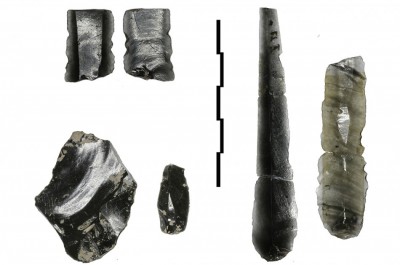Investigating the provenance of obsidian from Neolithic and Chalcolithic sites in Bulgaria
Abstract

Portable energy-dispersive X-ray fluorescence (pXRF) has become a widely used tool for the chemical characterisation (source identification) of obsidian found in archaeological contexts. While laboratory techniques such as neutron activation analysis (NAA) and inductively coupled plasma mass spectrometry (ICP-MS) can analyse more elements and have lower detection limits, pXRF can provide quantitative data of sufficient resolution to be able to match obsidian artefacts with their volcanic sources. At the same time, pXRF offers several advantages for obsidian research: (i) it can be deployed ‘in the field’ (i.e. on site or in a museum) without the need to bring samples back to a laboratory for analysis; (ii) information on elemental composition can be obtained relatively quickly; and (iii) measurements require no special preparation of samples and cause no visible damage to materials.
Authors
- Clive Bonsall
School of History, Classics and Archaeology, University of Edinburgh, William Robertson Wing, Old Medical School, Teviot Place, Edinburgh EH8 9AG, UK - Nedko Elenski
Regional Museum of History, Veliko Tarnovo, Bulgaria - Georgi Ganecovski
History Museum, Vratsa, Bulgaria - Maria Gurova
National Institute of Archaeology with Museum, Bulgarian Academy of Sciences, Sofia, Bulgaria - Georgi Ivanov
National Institute of Archaeology with Museum, Bulgarian Academy of Sciences, Sofia, Bulgaria - Vladimir Slavchev
Museum of Archaeology, Varna, Bulgaria - Radka Zlateva-Uzunova
Earth and Man National Museum, Sofia, Bulgaria

 Cite this article
Cite this article